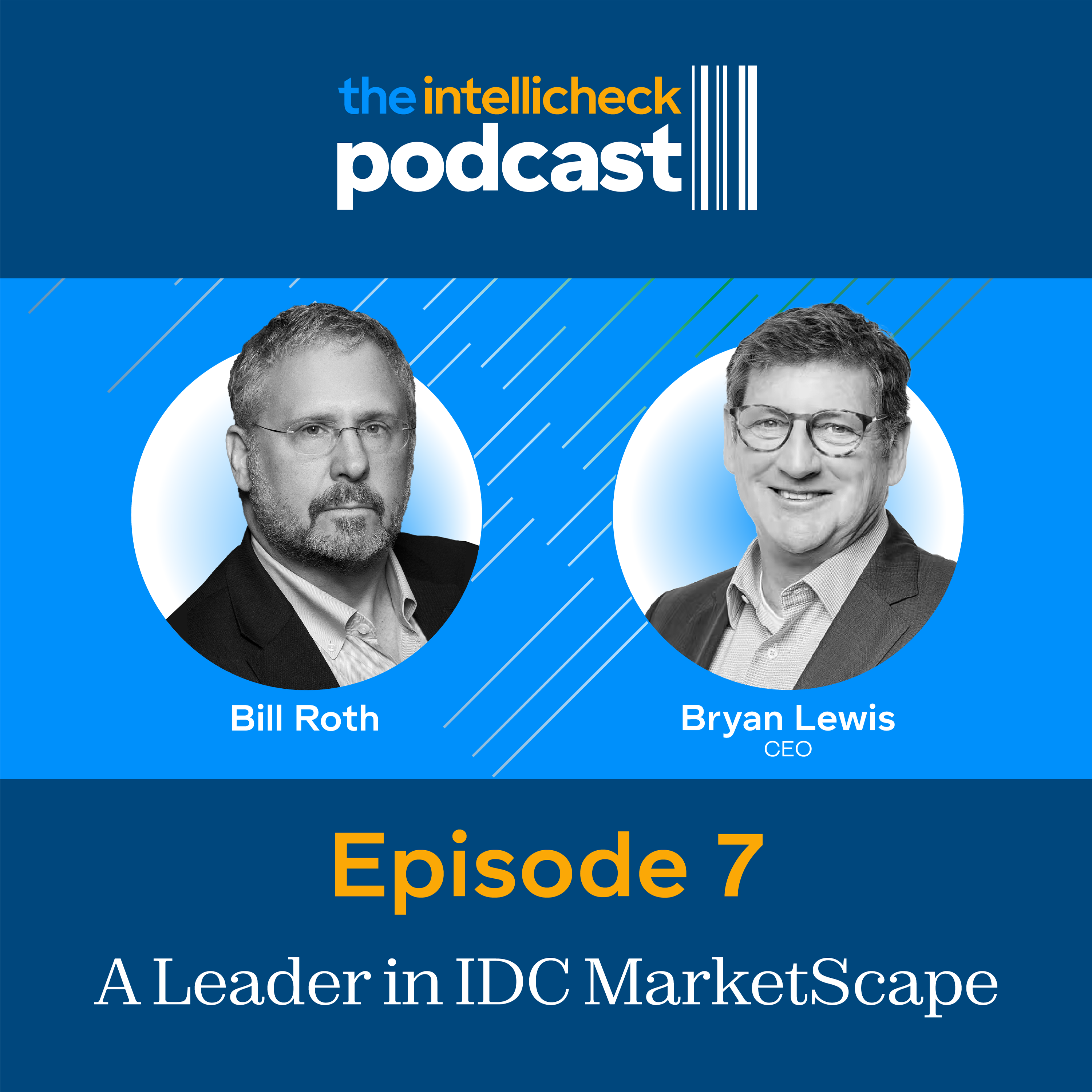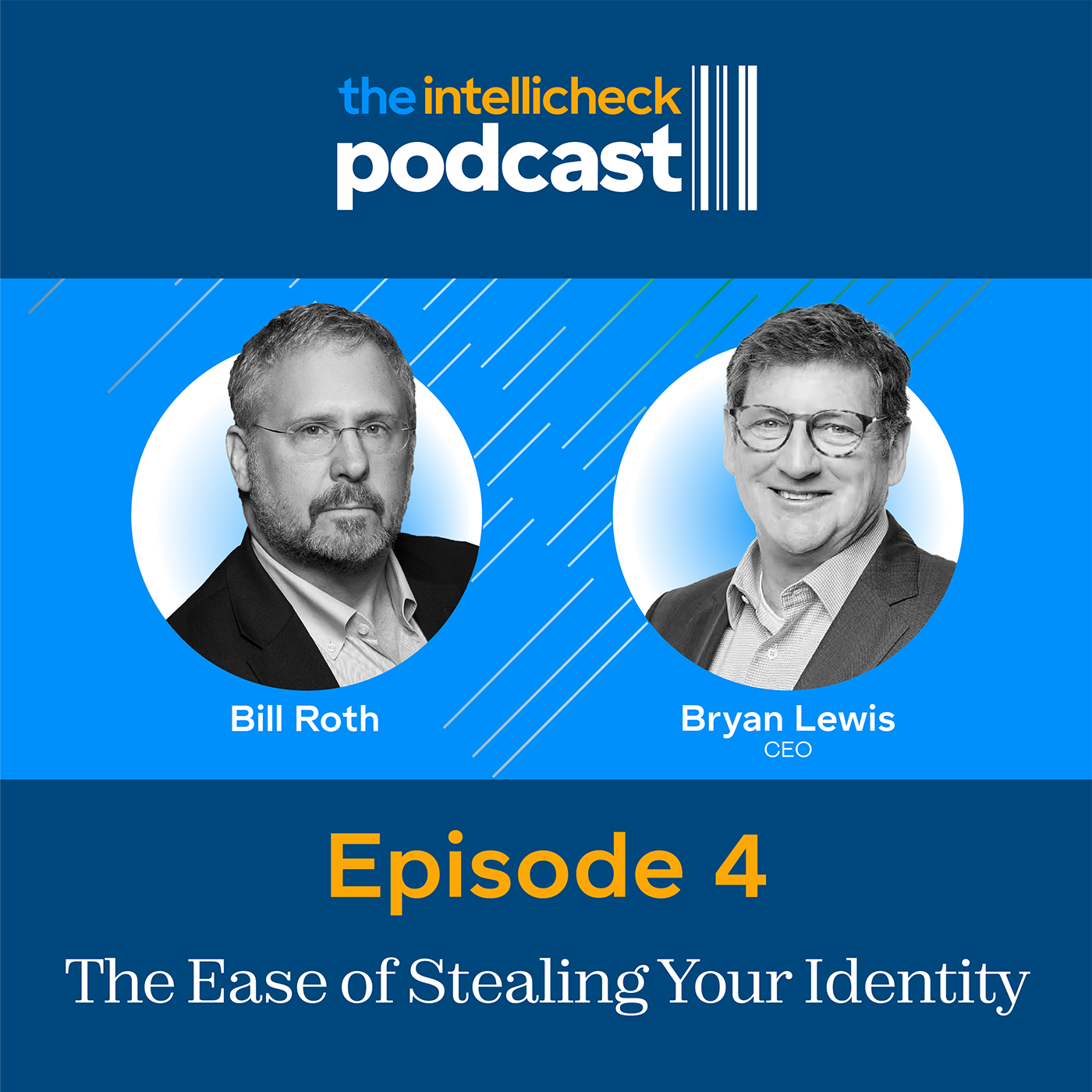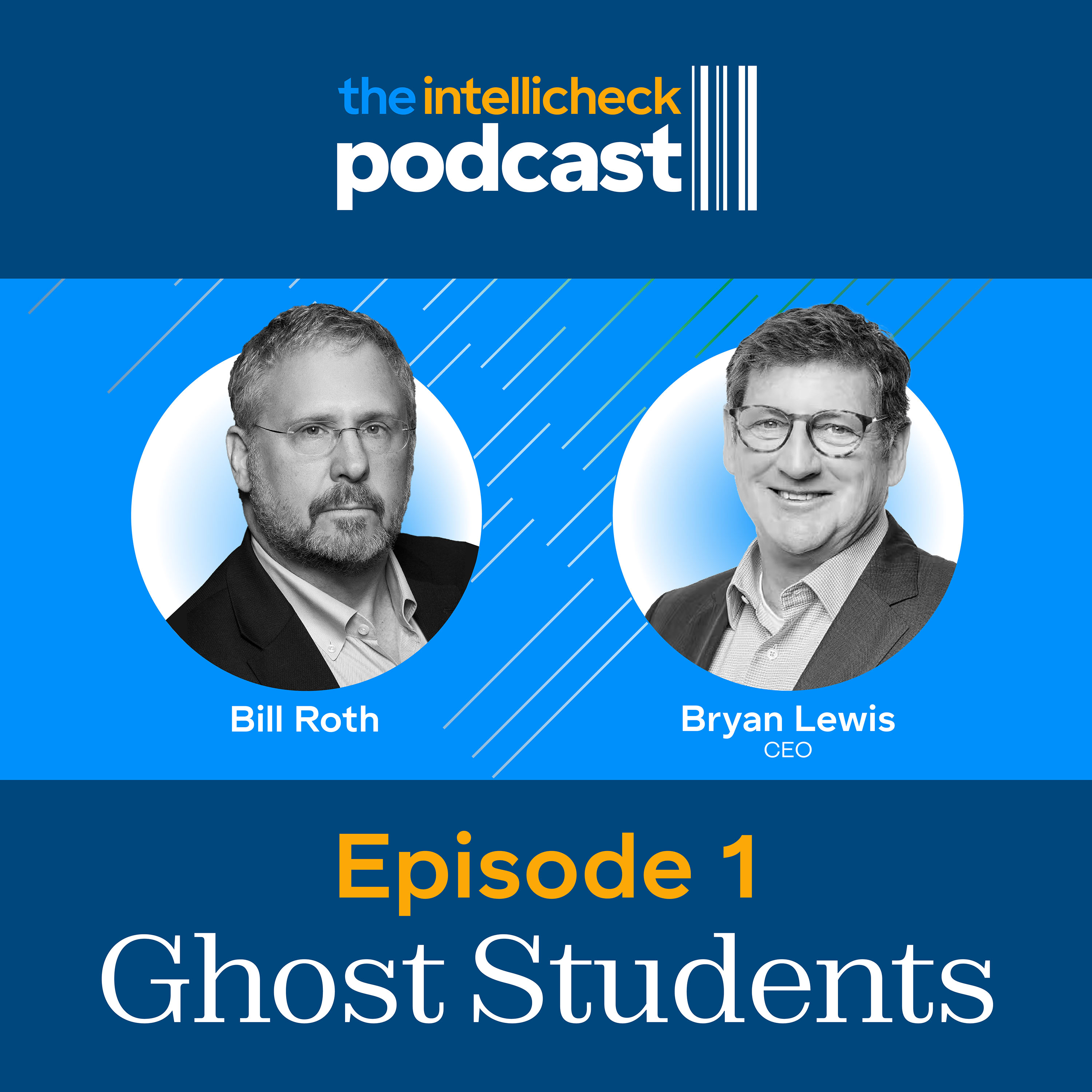Episode Transcript
Bill Roth: Welcome, Everybody, to the Intellicheck podcast. This is the show where we delve into the news and issues around identity verification, identity fraud, and the tools needed to combat it. With us this week on a special episode is Jonathan Robins, CTO of Intellicheck, to talk about baseball. Welcome, Jonathan.
Jonathan Robins: Hey, thanks for having me.
Bill Roth: This is great. So Jonathan has done. We found out that Jonathan has done some work for a team in Major League Baseball, and the team thought this was a great topic to discuss because it does have a tie to Intellicheck's work. So, Jonathan, first tell us about yourself. It's very exciting. Tell us about your work with Major League Baseball.
Jonathan Robins: All right, so back in 2012, I sold a business and tried to retire, and I didn't really have a lot of fun playing golf every day. So I decided to go back to work, and I didn't really want to be an executive or manager or something.
So my wife happened to see a job being advertised with the Chicago Cubs to come in and do some work in their analytics department, basically writing software and doing analytics. And I applied for the job, talked my way in, and started working for the Cubs for a few years. It was a great experience just learning how to apply data to every decision that you could possibly make in a business.
Bill Roth: That's fascinating. So, I mean, as we had sort of gone back and forth before this, you had sort of set up. You were sort of working as a data scientist and were actually researching player characteristics and what makes them successful. Tell us a little bit more about that.
Jonathan Robins: Yeah, so I had a really great experience here working with some really, really smart data scientists and analysts. They were phenomenal. I.
I can't hold a candle to these guys. They were so good, but they were doing a ton of research on what makes the player good and what correlates to success at the major league level. So you can imagine they're having to look at a young man, young person, even 16 years old, to make a decision if there's somebody they want to maybe commit to. So the draft is one thing, and spending money in the draft, but then developing that player to get them on the field is very, very expensive, time-consuming, and you need to really minimize your, you know, your losses and ensure success.
So there was a ton of research going on there to try to figure out how can we analyze a player and figure out what would make them successful at the major league level, so we can talk about some of those things. And some of the stuff that I witnessed, see what happened. And there was A lot of research around trying to figure out how we can look at some characteristic of a player, something that would correlate to success at the major league level, without having to look at that player for many, many years.
They needed to make quick decisions. They needed to look at small sample sizes of data and what could they use as a small sample size that would correlate to success of the major leagues?
So as not to give away any secrets or anything that they might do. It's pretty well known these days. The time when I was there was pretty new. We were looking at characteristics of a pitcher, and it really boiled down to, you know, how hard they could throw and how accurate. But spin rate was a huge capacity and I don't component of that. And it wasn't just how the ball spun; it was usable. Spin is what they were looking for.
The reason being is that when you hit a ball with a bat, and if it's spinning really hard, it's going to either go straight up in the air or straight down to the ground if you don't really make really solid contact and really squared up contact with a certain velocity. If you don't, it's pretty easy, out is the whole idea. So there was a lot of research done on that, using tons of data over the years, going back to the 1800s, trying to analyze players and what would, what, what small sample size could you use that would correlate to success in the future? So that way they could then focus the attention on players that the scouts should be watching. Not every player on the planet, but really low focus in on those players to either draft or to make trades for. And that's, that's what it really boiled down to. The Cubs have had great success. If you look at how they work with their bullpen.
They go out and find pictures. They're not paying huge amounts of money. They're usually looking for somebody who's had good experience in the past, that maybe they can fix some characteristics of and help them become successful again. It works really well for them. It doesn't cost a lot of money in the scheme of things.
Bill Roth: So, the really interesting thing is, what is this sort of shibboleth? The, the one thing that sort of determines a good player based on a small sample size at a particular time.
But you did a ton of research to go into figuring out which of those attributes was most useful.
Jonathan Robins: Correct.
So there's a ton of modeling that went on, massive machine learning models that were put together to really analyze large amounts of data. So we gathered data from all these sources, a lot of different sources. Whether it was players from overseas in the U.S. college players, or even high school players, it was all mashed together in a huge database that was then run through these models that could take days to run. And it would start ranking the players that they should be watching or looking for, and valuing them, and correlating them to say these, these are the ones that look like they'd have the most success that we should be targeting.
So if you really think about it, the problem that we were solving in baseball or very baseball-related applies pretty much to any commercial business.
The same, same things that we see.
[00:05:17] Bill Roth: Interesting. It reminds me of before, before we sort of. I want to follow that thread, but before we get there, this reminds me of the old IBM programmer test. Because the test you would take was not to get all the answers right, but to get the same kind of answers as people who they thought were successful.
[00:05:35] Jonathan Robins: Yeah.
[00:05:36] Bill Roth: And so sort of, that's the, that's the sort of key thing. So it's more of, it's more pattern matching than it is making sure they're perfect.
Yeah.
[00:05:44] Jonathan Robins: The other, I'll tell you the other characteristic on the hitter side, I talked about how the spin of the ball makes it really hard to hit a good shot to counteract spin.
It's how hard you hit the ball. The harder you hit it, the farther you know, the more likely it's going to go straight and not go straight up or straight down.
So that was a lot of research was done on that as well to look for what metric can we look at for somebody who hits the ball? Well, batting average is a statistic that you have to look at for a long time to really get a sense of how somebody's going to play. And it doesn't always correlate to the major leagues if you're looking at a batted average in a, in a minor league setting.
But they did discover that the common characteristics from good hitters were bat speed, how fast they could swing that bat through the strike zone. So they started doing a ton of research on that and found that that was a pretty good thing that you should be looking for. And you could use a small sample size. You could look at somebody who played in a tournament for a weekend, see how fast they're swinging the bat, and get a sense that this is probably somebody who might be somebody we want to pay attention to.
[00:06:42] Bill Roth: Fascinating. What I love about the game these days is you look at the just wealth of data that you get, not just obp, but also the sort of rotation of the ball. And they are starting to actually publish bat speeds in real time, which just, I think, makes the game a heck of a lot more enjoyable.
Jonathan Robins: Yeah, there's some people that really get into baseball field, become data nerds, and they're really tracking the data. That's probably the reason they get so excited about it. Whether it's just for fun or for gambling or whatever.
Bill Roth: Sure.
Jonathan Robins: The data is really what makes it really super interesting, I think.
Bill Roth: So tie this in. You sort of hinted at it earlier. Tie this into the work that Intellicheck does and how you take that particular skill to get to identity verification, identity fraud, and those kind of things. Sure.
Jonathan Robins: So one of the common characteristics, like I said before, pretty much the way you make these decisions, using a lot of data to help you drive your decisions and come up with metrics that you need to track.
There's a common theme to those, and that you have to be able to manage a mountain of data, a lot of data, and be able to query it very effectively and very quickly using different techniques than people are used to. The foundation of what we did in baseball is the exact same foundation that we applied here at IntelliJet, because we're trying to pull in as much data as we can. We already gather a lot of data from all the work we do, verifying over 100 million IDs a year, but then also augmenting that with outside data. We just needed an infrastructure where we could consume that data and then query it very quickly.
Bill Roth: And.
Jonathan Robins: And I'm talking about millisecond queries over hundreds of millions of records. So that's the foundation there. The second piece is now, because you have all this data, and now we build all these machine learning models that are looking for things that we might not spot with the human mind. And that's a lot of what we did in the baseball world. We're applying those same techniques here in Intellicheck. That's helping us figure out, is this a stolen ID? Is this somebody who's printed something, you know, try to fake an ID that's of a valid ID, that sort of thing that we can use a lot of data now to help us drive those decisions, build models that can use small amounts of data to predict what's going on with an ID.
That's really what it boils down to, as complex as what we're doing at the baseline. That's it. We're just using a lot of data and models that have been trained on that data to spot trends that you might not see with the human eye.
Bill Roth: Fascinating. So that's literally how we tie baseball back to Intellicheck and how they're doing an amazing job at determining fraud, identity verification, and so on.
Jonathan Robins: Right.
Bill Roth: So we.
Jonathan Robins: I pretty much mirrored what I was doing, learned a lot from working with those data scientists and analysts in baseball and the technology we deployed. I pretty much mirrored that here at Intellicheck and use the same kinds of things. I even recruited some people out of the baseball world to come and help with this because it's a similar kind of problem. And what we're doing is building models, gathering data, cleansing that data, and making it so that we can then visualize things that we normally wouldn't see unless you had a mountain of data and you had these models that would point out things that you weren't really looking for, you may not have thought to look for. It's pretty amazing.
Bill Roth: It is. You know, we're happy to have you back at any time. That's all the time we have today.
But we should find out ways to sort of follow up with this.
Very much so. My guest Today on the Intellicheck podcast has been Jonathan Robbins, the CTO of Intellicheck, and we've been discussing baseball analytics and Intellicheck. Thank you, Jonathan.
Jonathan Robins: Hey, thanks very much for having me.
Bill Roth: All right, folks, thanks for listening to the Intellicheck podcast. We will see you next time, and be safe out there.



